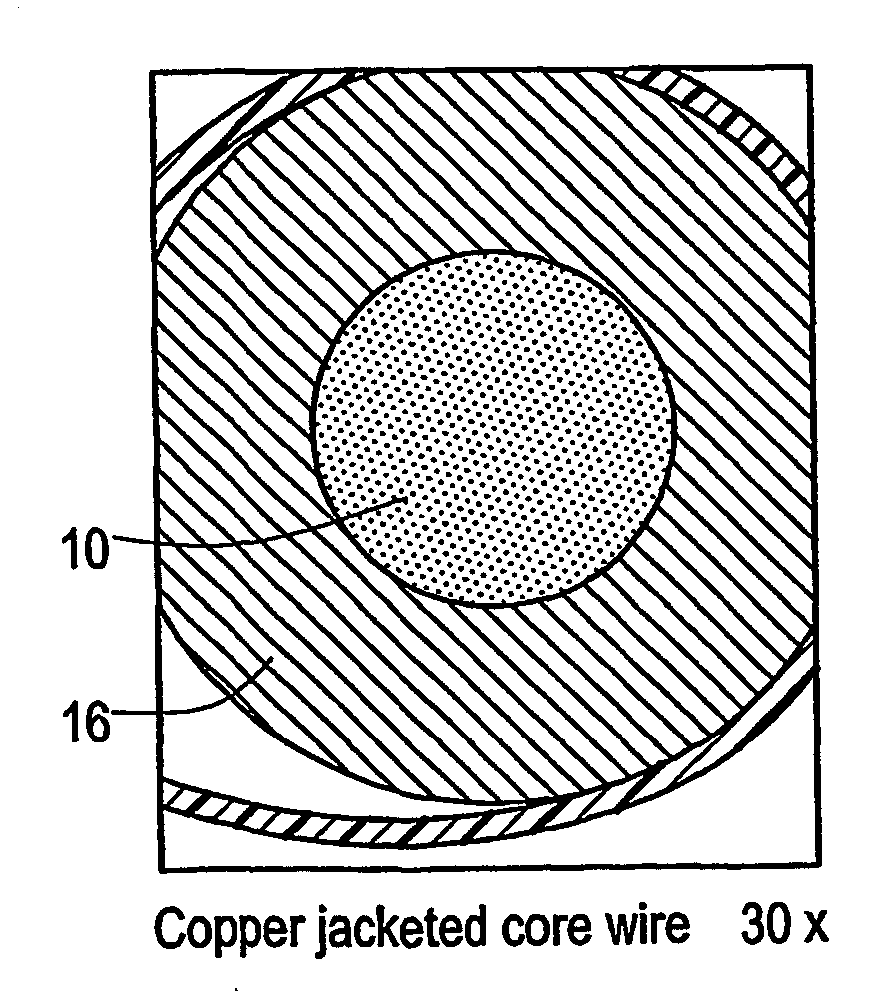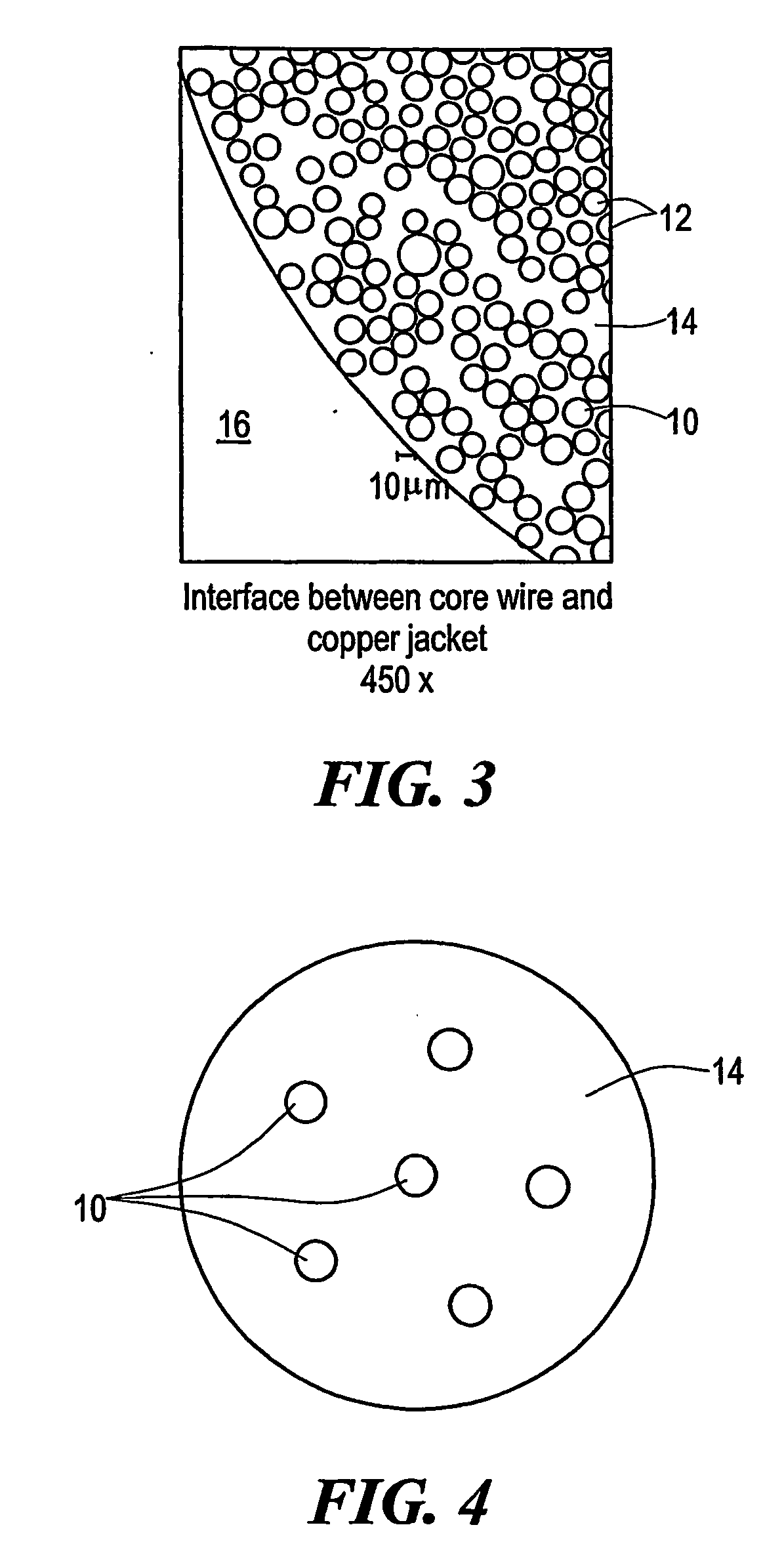High voltage electrical power transmission cable having composite-composite wire with carbon or ceramic fiber reinforcement
a technology of composite composite composite wires and high-voltage electrical power transmission cables, which is applied in the direction of power cables, cables, conductors, etc., can solve the problems of sagging of the cable, cable breakage, and the failure of this single cable, and achieve the effect of reducing the coefficient of thermal expansion and high power
- Summary
- Abstract
- Description
- Claims
- Application Information
AI Technical Summary
Benefits of technology
Problems solved by technology
Method used
Image
Examples
Embodiment Construction
[0012] According to the present invention, a high power electrical transmission cable is formed from composite-composite wires, each composite-composite wire comprising individual strands of a conducting material such as aluminum or copper in concentric, even, or random arrangement with one or a plurality of cores of ceramic or carbon fiber reinforced composite wire.
[0013] The composite core wire comprises aligned reinforcing fibers of carbon or ceramic embedded within a matrix material. Carbon fibers are preferred, because carbon is conductive and generally less expensive than ceramics. However, any suitable ceramic fiber, such as aluminum oxide, may be used if desired. Preferably, the matrix material is also a conducting material, such as aluminum or copper, although other materials can be used. For example, a polymer or epoxy material can be used for the matrix. Such a material is less conductive than, for example, aluminum or copper, but provides the same or similar strength an...
PUM
 Login to View More
Login to View More Abstract
Description
Claims
Application Information
 Login to View More
Login to View More - R&D
- Intellectual Property
- Life Sciences
- Materials
- Tech Scout
- Unparalleled Data Quality
- Higher Quality Content
- 60% Fewer Hallucinations
Browse by: Latest US Patents, China's latest patents, Technical Efficacy Thesaurus, Application Domain, Technology Topic, Popular Technical Reports.
© 2025 PatSnap. All rights reserved.Legal|Privacy policy|Modern Slavery Act Transparency Statement|Sitemap|About US| Contact US: help@patsnap.com



